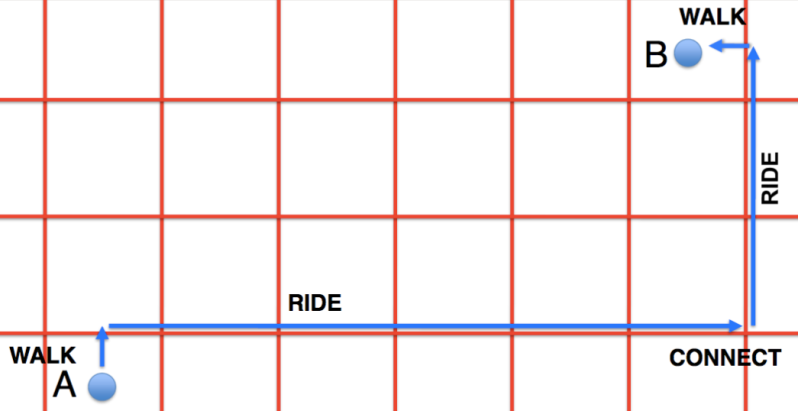Why Denver Needs to Get Cracking on a Grid of Frequent Bus Service

If there’s one thing Denverites want from transit, it’s not having to wait for the bus. In a recent city survey of 2,400 people, “higher frequency bus service” was the top result when respondents were asked to rank how they would spend transit resources.
A grid of frequent bus routes is the foundation of any good transit system, according to Jarrett Walker, one of the country’s most influential thinkers on transit and a consultant for the city on the transport portion of the four-pronged Denveright plan.
It sounds simple enough, but Denver doesn’t have a good frequent bus network. Currently, 70 percent of Denver residents don’t live within easy walking distance of transit that comes at least every 15 minutes during rush hour.
“I know you’re talking about rail projects, I know you’re talking about bus rapid transit projects,” Walker said at a Denveright meeting last week. “Those are all great. Those are things that have to start, though, with the bedrock of frequency — the bedrock of being able to offer a high level of certainty that the next bus or train is coming soon.”
A grid of all-day frequent transit service is important because it frees people from having to worry about schedules. If you know you can walk a short distance to get to a bus or train that will come every few minutes, no matter where you happen to be in the city, you can leave your home in the morning confident that the transit system will take you where you need to go.
Drivers (including many political leaders who shape the transit system) don’t realize what it’s like to wait for the bus — the closest they come is when they have to stop at a traffic light. A more accurate analogy, said Walker, would be having a gate in the driveway that only opens once an hour.
“One of the reasons we pound the table about frequency is that frequency is hard to explain to our friends and constituents and, often, leaders who are themselves motorists and tend to be thinking in terms of a motorist metaphor,” Walker said.
Structuring the frequent transit network as a grid means most trips won’t require more than one transfer. It also makes the system very egalitarian.
“Wherever you can layout the frequent grid, you don’t have to pick favorites,” Walker said. “We transit planners love the frequent grid because we don’t have to have conversations about who’s more important than who else. Because where we can afford the frequent grid, it’s just equally useful for everyone.”
A frequent transit network is essential, but it’s not free. It may require adding service, buying buses and hiring drivers. And it works best when streets designed to prioritize transit — with bus lanes and signal priority where needed, but also with good pedestrian infrastructure so walking to the stops is convenient and safe.
Denver can make these things happen if it takes the lead instead of leaving everything up to RTD. The regional transit agency is dominated by a suburban board of directors, and unless Mayor Hancock and other city leaders assert themselves, Denver won’t get the transit system it needs.
The ability to operate a high-frequency transit grid will depend on how much service Denver is willing to buy up from RTD — like Boulder does. On some of the city’s most important transit corridors, like Colfax Avenue and Federal Boulevard, general traffic lanes will have to be converted to exclusive bus lanes in order to run more buses reliably. It will be up to Mayor Hancock to claim that street space for transit.
Before Denver buys more service, transit planners have to map out the frequent network. That’s the next step in the Denveright transit planning process — identifying and ranking streets where frequent bus service will run. The final plan is expected to be released in December.


